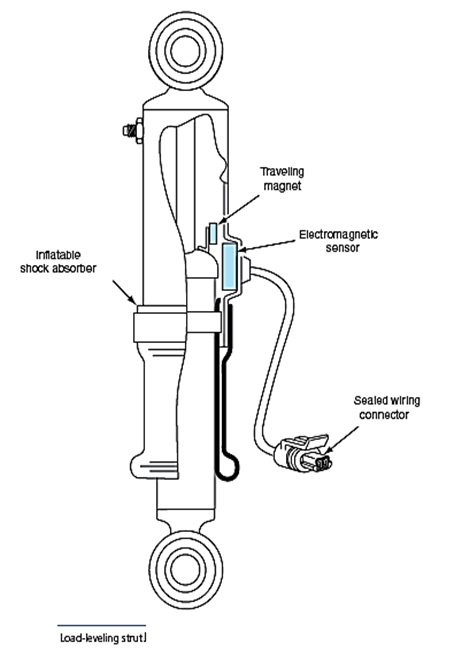←
Automobile Engineering
Load-leveling Shock Absorbers
Introduction:
Load-leveling rear shock absorbers or struts are used with an electronic height control system. Load-leveling shock absorbers use air pressure supplied to the shock absorbers to maintain rear suspension height. Load-leveling shock absorbers may be called air shocks.
Load-leveling strut:

- An onboard air compressor pumps air into the rear shocks to raise the rear of the vehicle, and an electric solenoid releases air from the shocks to lower the rear chassis.
- An electromagnetic height sensor may be contained in the shock absorber, or an external sensor may be used.
- This sensor sends a signal to an electronic control module in relation to the rear suspension height.
- The module controls the air compressor and the exhaust solenoid to control air pressure in the shock absorbers.
- This action maintains a specific rear suspension trim height regardless of the load on the rear suspension.
- If a heavy package is placed in the trunk, the vehicle chassis is forced downward.
- However, the load-leveling shock absorbers extend to restore the original rear suspension height.
- Aftermarket air shock absorbers are available. These shock absorbers contain an air valve connection. A shop air hose may be used to supply the desired pressure in these air shock absorbers.
- Aftermarket spring-assisted shock absorbers are also available. These are conventional shock absorbers with a small coil spring mounted over them.
- Upper and lower spring seats are attached near the top and bottom of these shock absorbers to support and retain the spring. The coil springs on the shock absorbers help the springs in the suspension system support the vehicle weight.